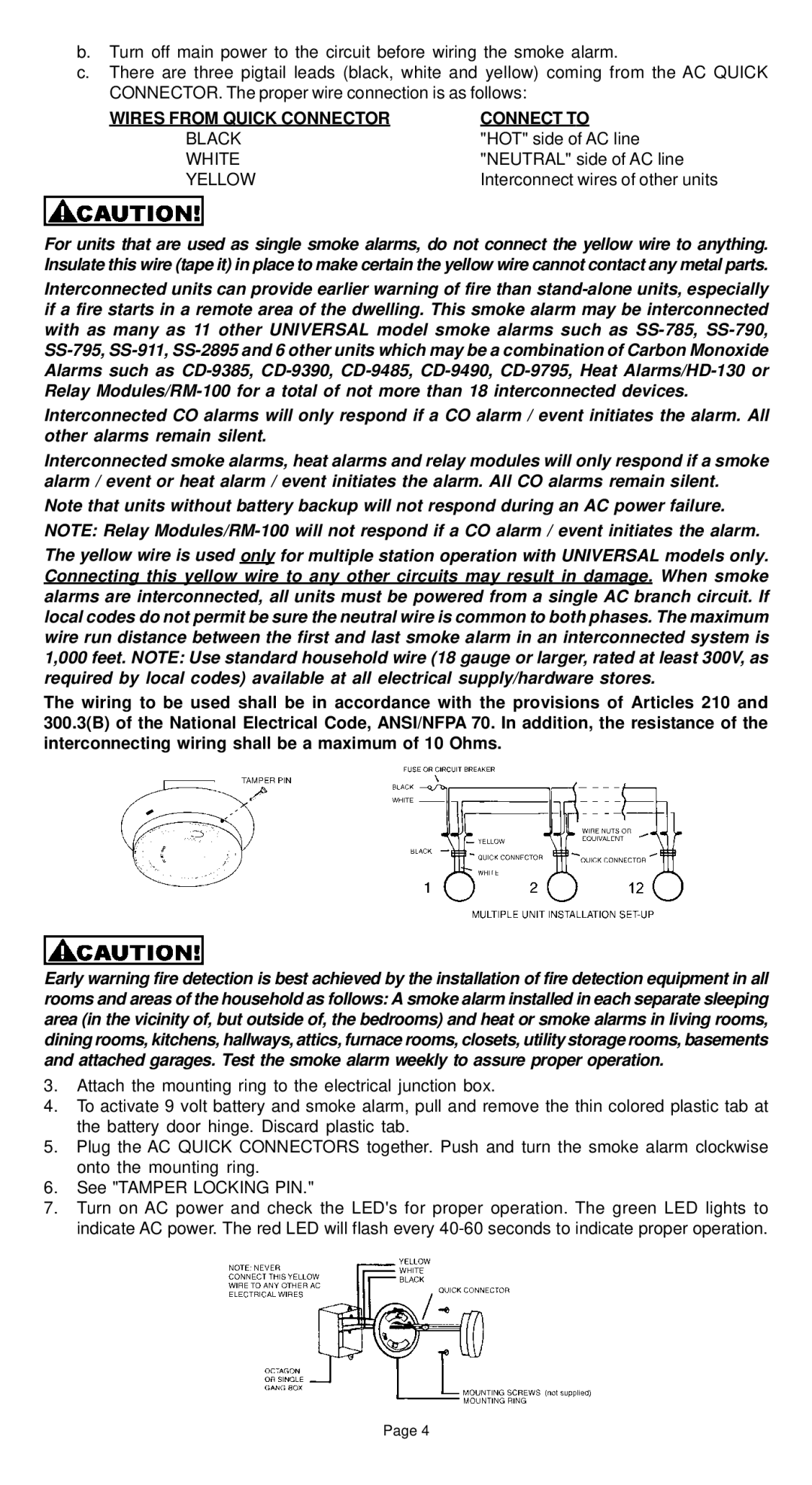SS-795 specifications
Universal Security Instruments SS-795 is a state-of-the-art smoke and carbon monoxide detector designed to enhance safety in residential and commercial settings. Built with advanced technology and user-friendly features, this device offers comprehensive protection from potential fire and carbon monoxide hazards.One of the standout features of the SS-795 is its dual-sensor technology, which combines photoelectric and ionic sensors. This dual approach allows the device to detect smoke from various types of fires, including both smoldering and fast-flaming fires, ensuring a quicker reaction to potential dangers. The photoelectric sensor is particularly efficient in detecting slow-burning fires, which often produce more smoke and are more likely to occur in residential environments.
Another key characteristic of the SS-795 is its built-in voice alarm system. This feature includes a clear voice announcement that not only alerts users to the presence of smoke or carbon monoxide but also specifies the nature of the hazard. This is particularly beneficial for households with children or elderly members, as it ensures that everyone is promptly informed of the danger.
The SS-795 is also equipped with a unique hush feature, allowing users to temporarily silence the alarm during false alarms, such as those caused by cooking smoke. This prevents unnecessary panic and ensures that the alarm only sounds when genuinely needed. In addition, the detector comes with a low battery chirp indicator, notifying users when it’s time to replace the battery for optimal performance.
Installation is straightforward, thanks to the user-friendly design of the SS-795. The device is battery-powered, ensuring that it remains operational even during power outages. Its sleek design allows for easy integration into any home decor, whether mounted on a ceiling or placed on a wall.
In conclusion, Universal Security Instruments SS-795 is a reliable and multifunctional smoke and carbon monoxide detector that prioritizes safety. With its advanced dual-sensor technology, voice alarm system, hush feature, and easy installation, it effectively addresses the needs of modern users. Investing in the SS-795 is a proactive step towards protecting your home and loved ones from potential fire-related hazards.

